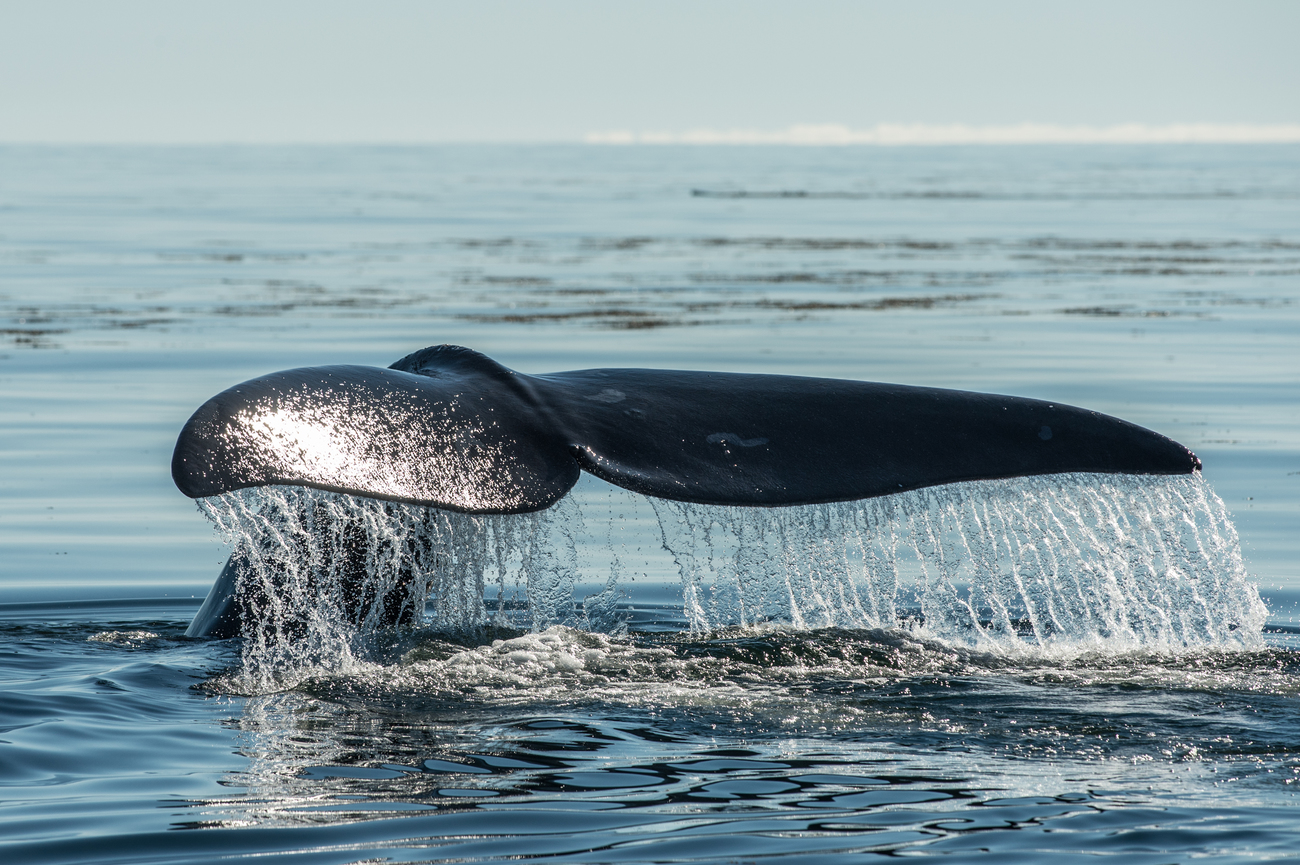21st Century Shipping
Avoiding a collision course to save whalesNorth Atlantic right whale officially classified as critically endangered by IUCN
North Atlantic right whale officially classified as critically endangered by IUCN

(Washington, DC - 9 July 2020) – Newly-released listings published today on the IUCN Red List (International Union for Conservation of Nature’s Red List of Threatened Species) make it official that the North Atlantic right whale (NARW) has joined a growing list of animals on the brink of extinction and is now officially classified as ‘Critically Endangered.’
With only an estimated 400 individuals remaining, this listing places the species alongside the orangutan, hawksbill turtle, black rhino, and vaquita, one step away from being classified as ‘Extinct in the Wild.' Of the 400 NARWs left, only one quarter are reproductive-aged females capable of producing more calves to help increase population numbers – meaning that the death of even one animal could be the difference between species recovery and extinction. Two newborn calves have been killed in the U.S. this year alone, bringing the total number of dead or presumed dead right whales to 41—or 10 percent of the known population—since 2017.
"The right whale has been heading downhill for 10 years now,” said Dr. Justin Cooke, the IUCN Assessor for this species and scientific advisor to IFAW, the International Fund for Animal Welfare. "Although there has been some progress in reducing ship strikes, fatal entanglements in fishing gear have become more frequent. We’ll lose this species unless we can continue to reduce all vessel interactions with right whales and ensure that only whale-safe fishing gear is used."
Once considered by whalers to be the 'right' whale to hunt since it was slow-moving and would float to the surface after being killed, the plight of the North Atlantic right whale has been well-documented since the 1980s, as its population has struggled to recover despite being protected from whaling since 1935. Entanglements in fishing gear and collisions with vessels are now the two greatest threats to this species, both of which are caused by humans. IFAW is leading a campaign to drive public awareness of these urgent threats, pushing for regulatory change, and working collaboratively alongside industry to help promote the adoption of critical, innovative solutions needed to immediately reduce the risks of both entanglement and vessel strike.
"Right whales aren’t dying from natural causes, we are killing them," said IFAW Senior Director Patrick Ramage. "We have it in our power to save them, too, with solutions that exist today. But fresh thinking and bold action are needed throughout the range of the right whale, before it’s too late."
In U.S. waters, a number of measures to reduce vessel strikes have been put in place throughout critical NARW habitat in recent years, including the Ship Strike Reduction Act, Seasonal and Dynamic Management Area speed restrictions, and warning systems for ships based on bio-acoustics (underwater sound detection). IFAW and partners have contributed to these efforts with ship speed monitoring and mapping, a comprehensive corporate responsibility program, and working with mariners to develop Whale Alert, an app openly available to the general public which tracks real-time movement of North Atlantic right whales. Unfortunately, vessel strikes remain a serious and chronic problem, as evidenced just last week when the body of a deceased six-month old calf was necropsied in New Jersey and found to have suffered at least two separate – and ultimately fatal – vessel collisions.
In Canadian waters, Transport Canada has begun to implement stronger ship speed restrictions in the Gulf of St. Lawrence, one of the key migratory routes for the NARW. However, at least four were struck and killed there just last year and a staggering 31 right whales have been found dead in U.S. and Canadian waters since 2017. Of these 31, for the cases where cause of death could be determined, every single one was due to human activities—including vessel strike (10) and entanglement (8). Ten additional right whales have been seriously injured and presumed dead, bringing the total in just three short years to 41 dead North Atlantic right whales. At least 17 of these were females, a significant blow to potential species recovery and highlighting the tremendous challenges that remain.
"Prompt action is needed to eliminate vessel strikes in both U.S. and Canadian waters. Until both nations put effective measures in place, whales will continue to be brutally injured and killed in this way," Ramage continued. "Entanglements in vertical buoy ropes used extensively in lobster and crab fisheries also present a critical, lethal threat. As the IUCN Assessment notes, some 83 percent of the individuals that make up the right whale population have been entangled at least once.”
As right whales migrate along North America’s east coast, they must navigate through dense areas of fixed trap and pot fishing gear, fraught with vertical buoy rope. Whales can easily become entangled in the ropes attached to this gear, and have often been known to drag gear around for many months or even years. This leads to severe chronic stress and injury, inhibiting the whale’s ability to move freely and feed, impacting reproductive success and eventually resulting in a slow and painful death.
Promising new technologies including ropeless fishing – the deployment of gear without fixed vertical buoy ropes in the water column – has the potential to dramatically reduce or eliminate NARW entanglements entirely. This technology has been used extensively by other countries across the globe. IFAW supports the development and adoption of ropeless fishing technology and other ‘whale friendly’ alternatives to traditional trap and pot fishing gear to protect North Atlantic right whales and preserve economically and culturally vibrant coastal fisheries.
Related content
Our work can’t get done without you. Please give what you can to help animals thrive.